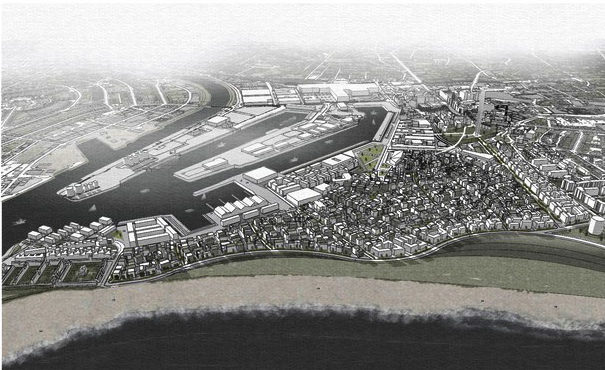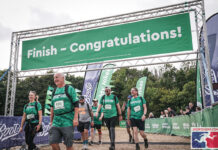
ARCHITECTURE students at Robert Gordon University have showcased how an urban village could be created in the historic heart of Aberdeen.
It forms part of a two-year project by the final year students, which centres around exploring issues concerning urban living – with a particular focus on generating ideas for the future of Aberdeen.
The blueprint for the new community identifies a site which recently became available due to harbour extension works at Nigg Bay, with it sitting between the existing harbour and esplanade.
The village would utilise the hot rocks found under the city to help power a shared heating system, as well as ‘cutting edge’ piezoelectric generators which capture energy from moving vehicles.
It would also follow the 15 minute city model, which would see residents live no longer than a 15 minute walk away from workplaces, shops, medical support and schools. Further to this, each housing block would overlook one another for security purposes and the encouragement of a social community.
The project is being led by visiting professor, Bill Black, who is director of Richard Murphy Architects, alongside the subject leader in architecture and part 2 architecture at RGU, Professor Neil Lamb.
Professor Neil Lamb said, “At a time when we have seen unprecedented change in city living, with some questioning the validity of living in cities in the post pandemic environment, the students set out to see what type of place could be made, learning from best national and international examples that people would want to live, work and play in.
“As humans, we long for meaningful relationships with those around us yet all too often infrastructure and the way we use our cities seems secondary in large re-developments. The new urban village of St.Clements, would re-establish village life at the heart of the city and create a model way of city living for years to come. It would be a place for all demographics; old and young, rich and poor to live in a new settlement that encourages citizenship and a real sense of community.”
David Reid, a final year student at the university who is involved in the project, added, “During the pandemic I think a lot of people really reassessed their priorities when it comes to how they spend their time, especially those commuting, and where they spend it. Parks and the countryside have never felt so valuable. These are key considerations we took with us during our design work on the project. I feel this approach would be adopted across both the city and country. In the end I think it’s really about putting people back at the heart of our cities.
“Our aim is to create a new urban village that is sustainable, affordable and accessible for everyone. A village that combines private living, flexible working spaces, easy to access amenities, and shared community areas. A place where people can enjoy a social lifestyle and be part of a vibrant community. We want to bring amenities to residents rather than forcing them to travel in search of them.”








